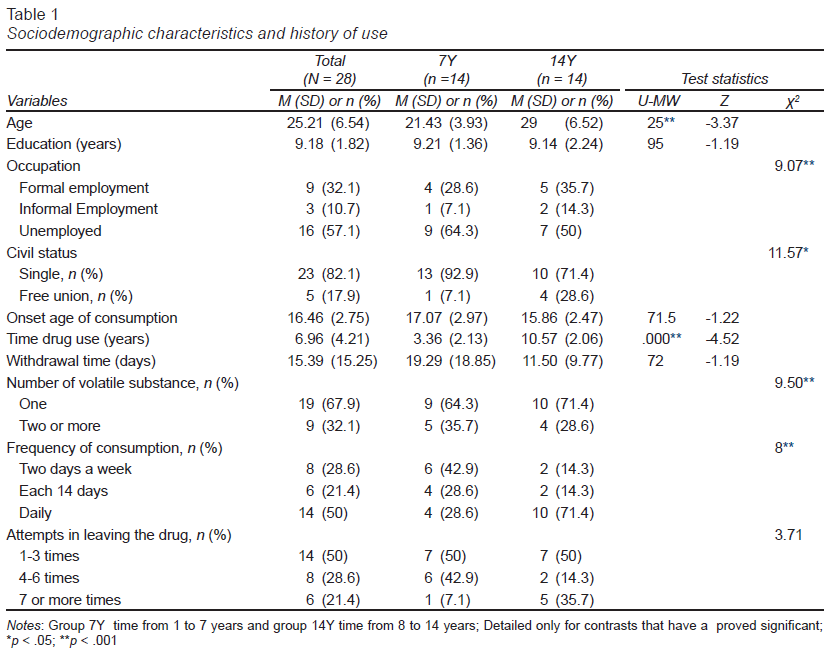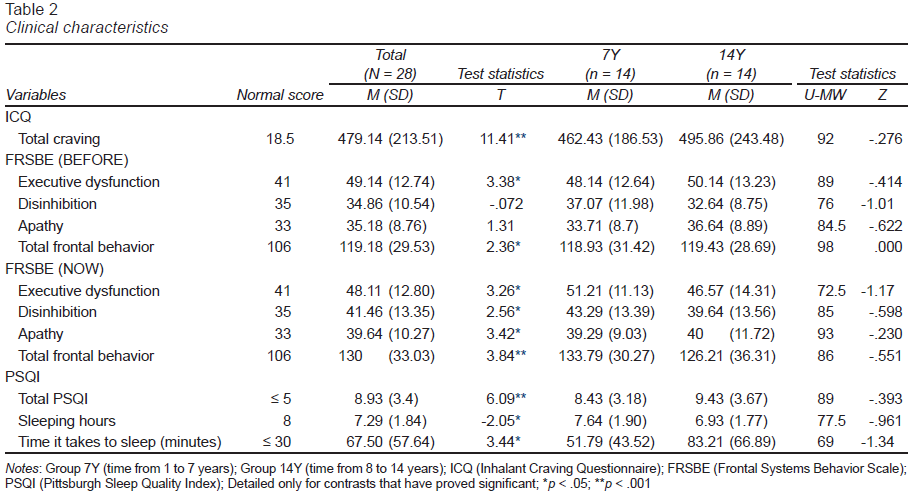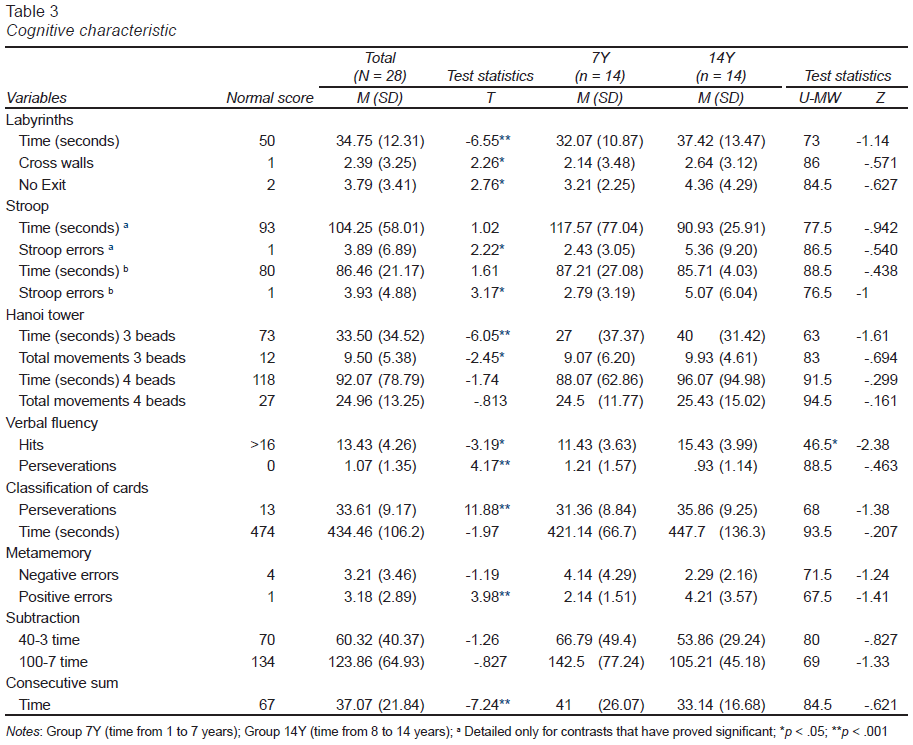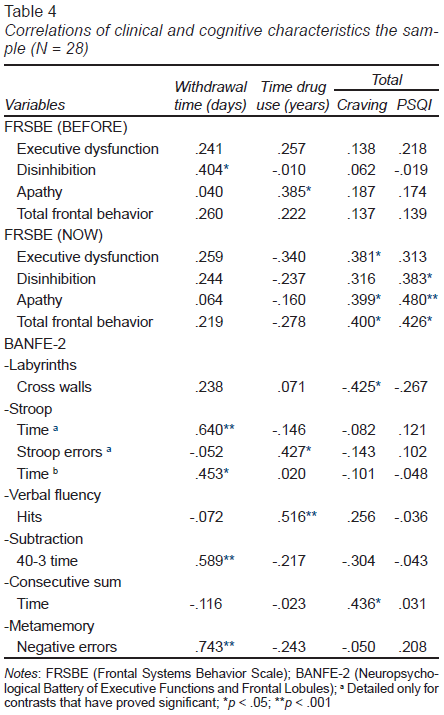Introduction
Inhalants (volatile solvents) are gases that evaporate rapidly at room temperature and have different chemical structures (Cruz, 2011). These substances are present in a great variety of products used in households and are legal and inexpensive (National Institute on Drug Abuse [NIDA], 2012). These products can be used with purposes of intoxication (Balster, Cruz, Howard, Dell, & Cottler, 2009; Howard, Bowen, Garland, Perron, & Vaughn, 2011).
Nowadays there is a marked variability in the type of volatile substances used and the patterns of use in each country (Elkoussi & Bakheet, 2011; Hynes-Dowell, Mateu-Gelabert, Barros, & Delva, 2011; Važan, Khan, Poduška, Št’astná, & Miovský, 2011). Recent drug surveys conducted in Australia (Guerin & White, 2018), Morocco (Zarrouq et al., 2016), Canada (Boak, Hamilton, Adlaf, & Mann, 2017), and the United States (Johnston et al., 2017) prove it. In Mexico, the prevalence of inhalant misuse in recent years has changed as volatile substances are now the third drug of choice in general population, with a prevalence increasing in people between 18 to 34 years old, from .1 in 2011 to .3% in 2016 (Villatoro-Velázquez et al., 2017).
Numerous studies report that inhalants can trigger acute and chronical medical problems (Dinsfriend, Rao, & Matulevicius, 2016; Calhoun et al., 2018; Crossin, Cairney, Lawrence, & Duncan, 2017). For instance, the inhalant use disorder can disrupt normal trajectories of psychological, emotional, and neurobiological development (Kurtzman, Otsuka, & Wahl, 2001; Bowen, Batis, Páez-Martínez, & Cruz, 2006).
At a brain level, inhalant use causes abnormalities in subcortical regions, a decrease in thalamic volumes (Hong et al., 2014), size and shape alterations of the corpus callosum (Takagi et al., 2013) that produce changes in white matter by demyelination, hyper intensities, callosal thinning, and gray-matter loss in white matter boundaries (Yücel, Takagi, Walterfang, & Lubman, 2008). These damages over the white matter network affect particularly the connectivity of the frontal lobes, which in turn affects several executive processes (O’Sullivan, Barrick, Morris, Clark, & Markus, 2005).
Recent studies in inhalant users’ executive functions have identified deficits in the information processing speed, lower self-monitoring (Marín-Navarrete, Toledo-Fernández, Villalobos-Gallegos, Pérez-López, & Medina-Mora, 2018), deficits in visual and motor speed, visual learning, working memory, psychomotor function, and spatial problem solving (Dingwall, Maruff, Fredrickson, & Cairney, 2011).
As can be seen, these general findings are important. However, in order to correctly design prevention and treatment programs, detailed descriptions of the clinical and cognitive characteristics are necessary (Crunelle et al., 2018) because they would allow for the assessment of the level of affectation and its variations according to the time of consumption. That is why the objective of this study was to analyze the clinical and cognitive performance of inhalant users and the effects of time in consumption.
Method
Study design
Quantitative, descriptive, cross-sectional study.
Participants
Thirty participants were recruited as part of a main Inhalant Addiction Project. Two subjects were excluded because they did not finish the evaluation. Two groups were then formed to explore the effect of inhalant use time. Since there was no clinical or theorical criteria for making the groups, we considered a cut-off point related to the time using the drug. For this reason, we decided to use the median as the statistical criteria for splitting the sample. In group one (7Y), participants had been using inhalants for one to seven years and in group two (14Y) participants had been using inahalants for 8 to 14 years.
Volunteers were invited to participate in the investigation by the addiction treatment center’s medical staff. The selection criteria were: a) diagnosis in accordance to the Fifth Edition of the Statistical Manual of Mental Disorders (DSM-5) criteria for inhalant use disorder, b) absence of comorbid mood or personality disorders, c) absence of documented head injury or neurological disorders, d) to be between 18 to 43 years old, e) interned and in detoxification treatment, and, f) a minimum abstinence of 48 hours before the testing to exclude possible interference of substance or withdrawal symptoms.
Procedure
Evaluations were conducted individually and a battery of tests was administered in a quiet room, during a session with an approximate duration of 120 minutes.
The start of every session consisted of a brief explanation of the study, followed by the signing of the informed consent form and the collection of sociodemographic and drug use history data. Finally, the clinical and cognitive tests were administered. All evaluations were performed in a fixed order on paper and pencil.
Instruments
Sociodemographic and clinical assessments
Sociodemographic and clinical data. This is a brief evaluation including, age, marital status, education, and occupation. This also included age of onset of consumption, time spent in consumption, withdrawal, number of volatile substances, frequency of consumption of inhalants, and attempts at trying to leave it.
Inhalant Craving Questionnaire (ICQ). It is a self-administered instrument, with a cut-point for craving of 18.5 millimeters (mm). ICQ has two sections. The first one asked information about drug use history and the second one had ten statements indicating different symptoms of inhalant craving. Each one had to be answered on a visual analogue scale (VAS) with a 100-millimeter line, without divisions. The participants drew a line on the scale that best described the intensity of their desire. The length of the line drawn by participants was measured and recorded in millimeters. Cronbach’s Alpha of .947 and validation in Mexican population was used (Alonso-Matías, Páez-Martínez, Reyes-Zamorano, & González-Olvera, 2015).
The Frontal Systems Behavior Scale (FRSBE). A scale that evaluates several behavioral problems associated with prefrontal brain damage. The two embodiments of answers within the questionnaire allow the comparison of behavior before (FRSBE before) and after injury or alteration (FRSBE now). It consists of 46 items divided into three subscales associated with the functioning of three brain areas: anterior cingulate cortex (apathy subscale), orbitofrontal cortex (disinhibition subscale), and dorsolateral prefrontal cortex (executive dysfunction subscale). A Spanish version has shown an adequate construct validity and an internal consistency as measured by Cronbach’s Alpha of .93 (Grace & Malloy, 2001; Stout, Ready, Grace, Malloy, & Paulsen, 2003).
Pittsburgh Sleep Quality Index (PSQI). It is a self-reporting instrument used to measure the sleep quality and disturbances over the last month. It consists of nineteen individual items which generate seven scores: subjective sleep quality, sleep latency, sleep duration, habitual sleep efficiency, sleep disturbances, use of sleeping medication, and daytime dysfunction. The addition of the scores of these seven components yields one global score, which has a range of 0 to 21 points. A final score of zero indicates non-existence difficulties and 21 points is interpreted as severe difficulties to fall asleep. A score greater than five points denotes poor sleep quality. The scale has been translated in to Spanish, and is used in psychiatric clinical practice and research activities. It has an internal consistency, based on Cronbach’s alpha, of .78 and two main factors: sleep duration and sleep quality. Given its psychometric properties and its validated for Mexican adult population, the PSQI was used in this study (Mollayeva et al., 2016; Jiménez-Genchi, Monteverde-Maldonado, Nenclares-Portocarrero, Esquivel-Adame, & de la Vega-Pacheco, 2008; Buysse, Reynolds, Monk, Berman, & Kupfer, 1989).
Cognitive assessments
Neuropsychological Battery of Executive Functions and Frontal Lobes (BANFE-2). This test evaluates cognitive processes associated with the prefrontal cortex. It is made of 15 tasks that are divided based on anatomical-functional criteria: orbitomedial, dorsolateral, and prefrontal cortex; its subtests have a high reliability and validity. The testing time lasts for about approximately 50 minutes. Scores are standardized; the interpretation of the total score and of each one of the areas allows for the classification of the performance of those evaluated. The battery has normative data in Mexican population from six to 80 years old. The reliability of agreement between testers is .80 (Flores Lázaro, Ostrosky Shejet, & Lozano Gutiérrez, 2012).
Statistical analysis
Descriptive analysis was used for sociodemographic data, history of use, clinical, and cognitive variables. In particular, the use of non-parametric statistics (Chi-square test) was used for categorical variables and (U Mann-Whitney test) to compare continuous data in two groups (7Y and 14Y).
Student’s t test was used to analyze the scores of each one of the clinical and cognitive tests of all the participants and to compare them with the cut-off point of each scale. The correlations were made between sociodemographic variables, consumption history, and test results.
All data were analyzed using the Statistical Package for Social Sciences (SPSS/PC; version 20.0) and the tests were considered bilaterally with the significance set at p < .05.
Ethics considerations
The Ethics and Research committees of Instituto Nacional de Psiquiatría Ramón de la Fuente Muñiz approved the investigation study with registration numbers CEI/C/006/2018 and IC18081.0. It was carried out according to the Declaration of Helsinki. All participants were informed about the study purpose; they accepted to participate and provided a verbal and written informed consent.
Results
The sample size of the cognitive analysis was composed by 18 males, aged (M = 25.56, SD = 6.55) and 10 females, aged (M = 24.60, SD = 6.83). The analysis showed statistically significant differences. In group 7Y most of the participants were single, unemployed, and had a consumption of more than two substances. Group 14Y’s participants were older, with a higher daily amount of time using inhalants and consumping them (Table 1).
The results of the clinical assessment showed statistically significant scores. In particular, when comparing the total score of all the participants and cut-off points in ICQ, FRSBE (before and now) and PSQI, scores were above normal ranges. According to each test interpretation, these scores reflected the presence of craving, frontalizaed type behavioral alterations and deficits in the ease in falling asleep. When comparing groups (7Y and 14Y), there were no statistically significant differences between them (Table 2).
The results of seven tasks out of a total of eight on the cognitive assessment of the BANFE-2 battery showed statistically significant differences from the normal scores. The tasks were: labyrinths (time, cross walls, no exit), stroop effect (errors a & b), Hanoi (time and movements of 3 beads), verbal fluency (hits, perseverations), classification of cards (perseverations), metamemory (positive errors), and consecutive sum (time). When comparing groups 7Y and 14Y, there was only a statistically significant difference in the verbal fluency task, particularly in the hits (Table 3).
Statistically significant correlations show that abstinence time is positively related to disinhibiting scores FRESBE (before), negative errors of metamemory, and time in tasks as stroop effect and subtraction 40-3. Consumption time is positively related to apathy, mistakes in stroop effect task, and successes in verbal fluency task. In relation to the craving score, this is positively related to FRSBE (now) in executive dysfunction, apathy, and total frontal behavior, and in BANFE-2 there is a negative relation in labyrinths (cross wall). On the other hand, PSQI scores correlate with FRSBE (now) in apathy, disinhibition, and total (Table 4).
Discussion and conclusion
The first relevant aspect found in this study was the presence of craving in consumers of inhalants as shown by the ICQ results (M = 479.14, SD = 213.51). Craving plays an important role in the maintenance of drug dependence and in relapse after successful treatment (Paliwal, Hyman, & Sinha, 2008; Weiss et al., 2003). It is a basic sign that keeps manifesting in the initial or continued remission phase and according to the DSM-5, is used as an indicator of relapse. In substances with similar effects to inhalants, such as alcohol, subjects have significantly high craving scores (Kharb, Shekhawat, Beniwal, Bhatia, & Deshpande, 2018; Petit et al., 2017). Literature points out that people who have a low inhibitory control will be more prone to use substances and therefore engage in drug seeking behaviors in the presence of craving (Bresin & Verona, 2019). Thus, in this case, inhalants are not an exception; craving is a useful tool to predict subsequent drinking and to identify individual risk of relapse during treatments (Seo & Sinha, 2014).
In this study, statistically high significant scores were observed in test FRSBE (before and now) (executive dysfunction, disinhibiting, apathy, and a total frontal behavior), which indicates behavioral alterations in inhalant users. These results are consistent with studies conducted in different types of addicted populations, where the scores are high in polydrug users (Spinella, 2003; Pedrero-Pérez et al., 2009). This type of scale favors the description of behavioral alterations prior to consumption and current manifestations (Verdejo-García, Aguilar de Arcos, & Pérez-García, 2004).
On the other hand, the use of psychoactive substances and its repercussions on sleep have been extensively detailed. Reports indicate that both substance use disorders and sleep disorders are more frequent psychiatric problems at an early age with negative effects in normal development. Although these difficulties also impact in adulthood for instance in general exist short-term and long-term changes in sleep patterns and architecture are common during active substance use, withdrawal, and recent and prolonged abstinence (Gromov & Gromov, 2009). In particular use of alcohol this causes difficulties in falling asleep, frequent awakenings, daytime sleepiness and abnormal sleep quality (Angarita, Emadi, Hodges, & Morgan, 2016). In basic studies, it has been shown that inhalants’ effects on dopamine and serotonin dynamics cause disruptions on the sleep-wake cycle (Alfaro-Rodríguez et al., 2011). In clinical studies, the prolonged use of inhalants is related to insomnia and somnolence. For instance, homeless inhalant users show fragmented sleep patterns, insomnia, and sleep restriction (Terán-Pérez et al., 2020). Our study indicates that inhalant users who are not in street conditions have sleep disturbances. It for them more time to fall asleep, they sleep less and with a poor quality. Additionally, there have been significant correlations with FRSBE scores (now). With this, it can be clinically inferred that in the presence of frontolized type behaviors (apathy and disinhibition) sleep is affected.
In relation to cognitive functioning, results in tasks indicate that early abstinence inhalant consumers face alterations in executive functioning, mainly in inhibitory control (Stroop), planning (Labyrinths), decision making (Hanoi tower), working memory (consecutive sum and metamemory), fluency (verbal fluency), and cognitive flexibility (classification of cards). It is worth mentioning that in this sample, consumption time did not interfer with a greater severity on alterations. Groups (7Y and 14Y) present similar clinical manifestations regardless of the time of consumption. Nevertheless, there is a correlation between stroop (errors) and verbal fluency (hits) tasks with consumption time, but with differences between the groups.
Correlation analyses revealed that abstinence interferes with the execution time of tasks such as stroop and subtraction, which reflect that inhalant users take a longer time to respond, although this does not prevent it from being erroneous. In the case of metamemory (negative errors), it indicates that users underestimate their learning, which points to a lower prediction compared to their actual performance. Craving scores correlate with performance in consecutive sum tasks (time) and labyrinths (cross walls). Clinically, this indicates that in the presence of craving there is a greater number of inhibitory mistakes.
Results from this study are consistent with the literature; it is shown that inhalant consumers, just as other addicts, have a wide range of behavioral problems associated with alterations in executive functioning, which generates a significant deterioration in social and occupational functioning (Verdejo-García, Rivas-Pérez, López-Torrecillas & Pérez-García, 2006).
It should be noted that these alterations may not only be associated with dependence, but also with previous problems in everyday life, therefore, it is required to continue investigating to what extent these deficits results from the chronic use of inhalants or from premorbid differences (Ribas-Siñol et al., 2015). It is also important to consider that the increase in the severity of inhalant related problems increases the severity of psychiatric comorbidity and the use other substances (Perron & Howard, 2009). The early detection of these profiles can favor a preventive intervention and an avoidance in the increase of deterioration, consequently favoring the adequate development of strategies of cognitive and emotional control.
Although this study is useful, it is not exempt of limitations. First, it is a cross-sectional study, which implies that we cannot detect longer-term effects. Longitudinal studies are necessary to compare results. This is a preliminary study, and for that reason sample is limited. An increased number of participants would help to obtain a broader picture of the population studied. Among pending evaluation questions are comparing results in combination with other substances such as cannabis and cocaine, and with a personality disorders’ presence. In addition, it would be interesting to carry out evaluations with other tests to evaluate the same phenomena. In addictions to inhalants there is craving, and significant clinical and cognitive (inhibitory control, planning, decision-making, working memory, verbal fluency, and cognitive flexibility) alterations. Withdrawal time and craving increase these alterations and these changes remain independent from the time of use.



